First Landing State Park, Virginia Beach, Virginia
First Landing State Park, located on Cape Henry just north of Virginia Beach, has 2,888 acres of camping, cabins, hiking, biking, swimming, fishing, shelling, boating, trails, and overall wonderful relaxation with a 1.25 mile beautiful beach on the shores of the Chesapeake Bay. There is also an air-conditioned nature center that tells the story, in large relief, of the first landfall of the Jamestown settlers on April 26, 1607 after a 144-day voyage from England.
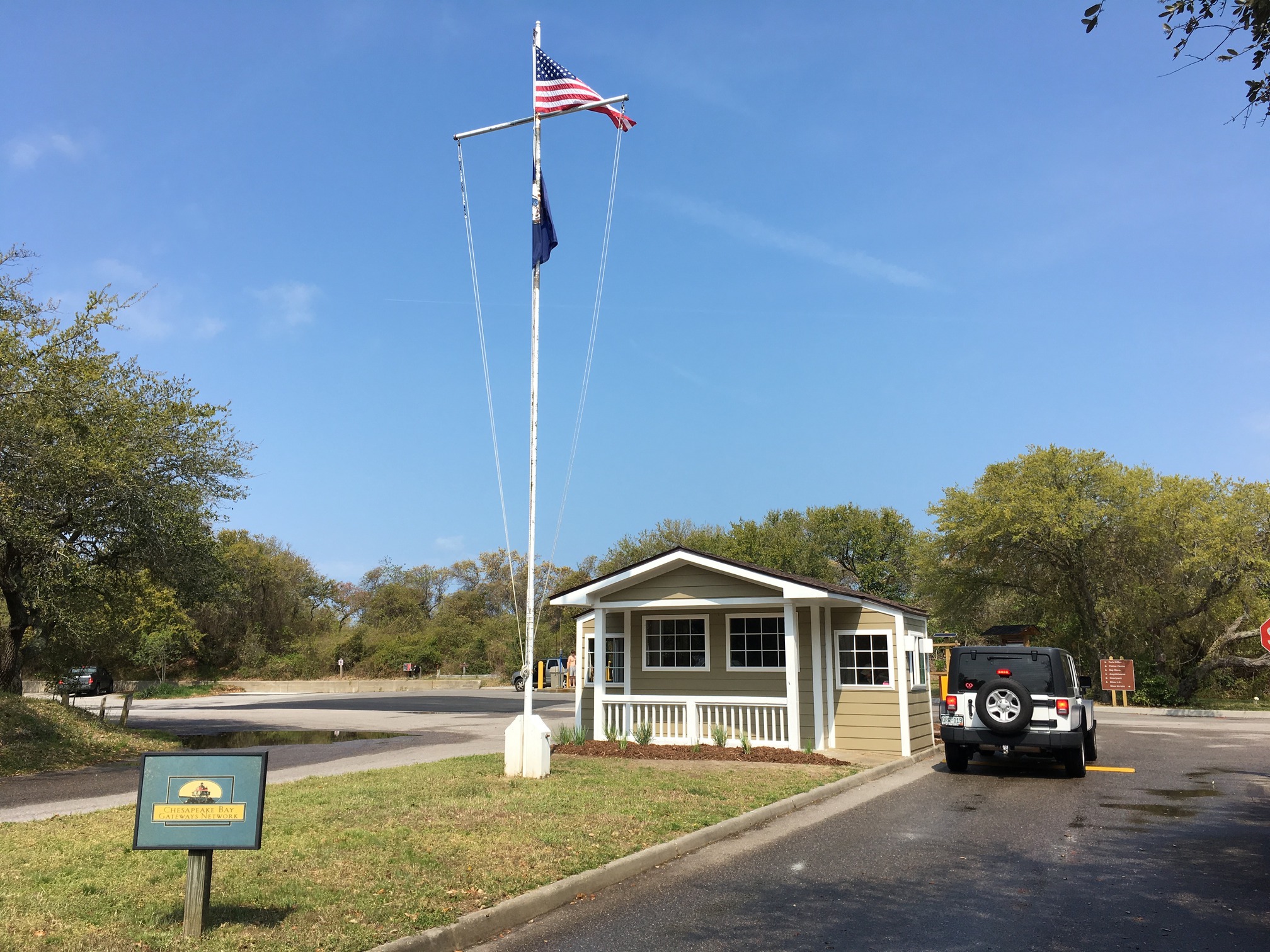
Driving north to First Landing from one of the hotels along Atlantic Avenue
on Virginia Beach is easy; it’s only eight miles each way. The address for
First Landing State Park is 2500 Shore Drive, Virginia Beach, VA 23451; the
main entrance is located off of Route 60/Shore Drive which leads to the
information center plus the bay beach. The entry fee for out-of-staters, per
car, is $5 on weekdays and $7 on weekends.
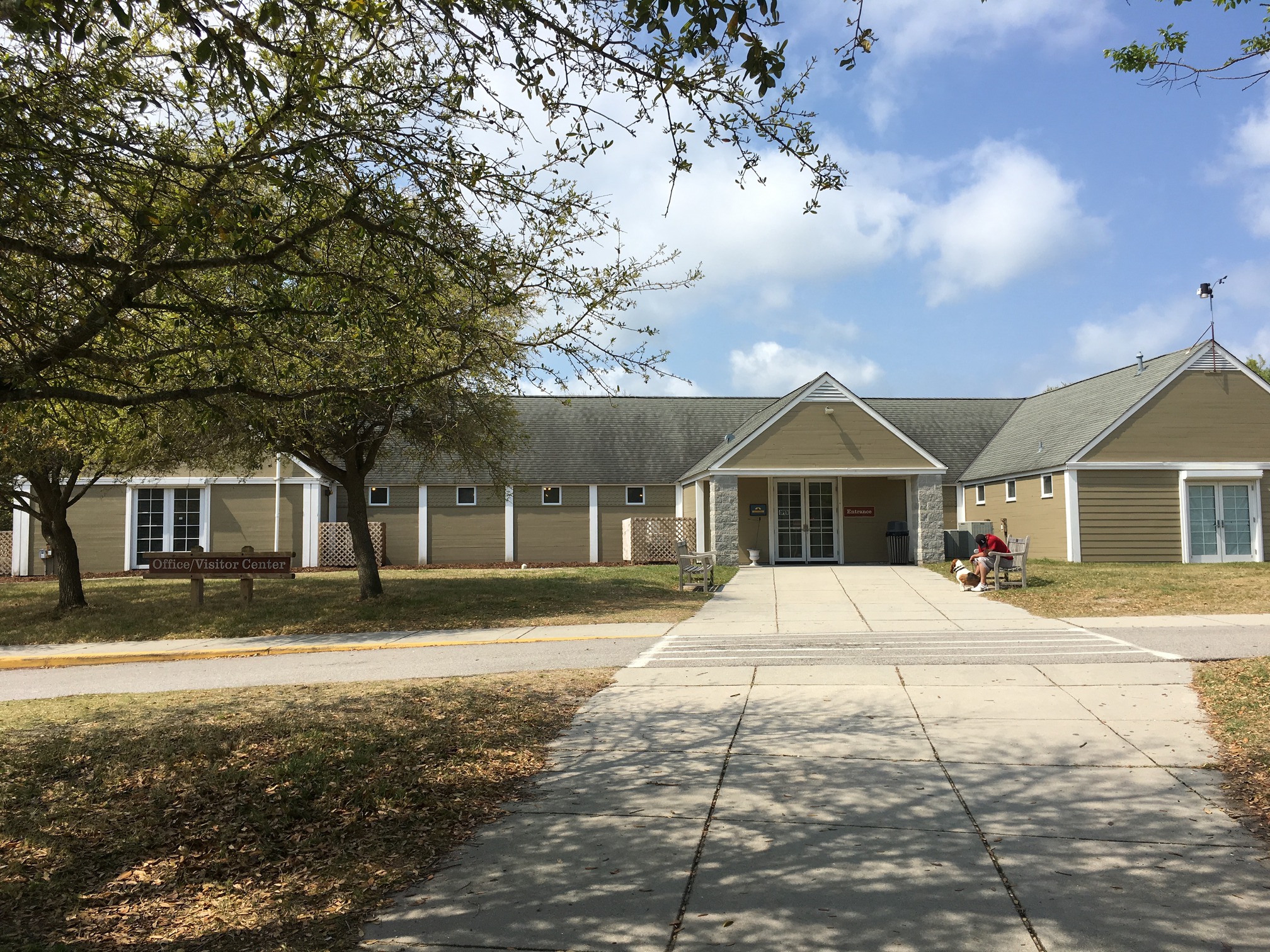
A little background: this state park is named for the First Landing of
English explorers at Cape Henry in April 1607. Their voyage actually began
on December 20th, 1606, departing from Blackwall (now part of London),
England, with Captain Christopher Newport in charge. The three ships
involved finally reached the West Indies (Martinique) on March 23rd, 1607.
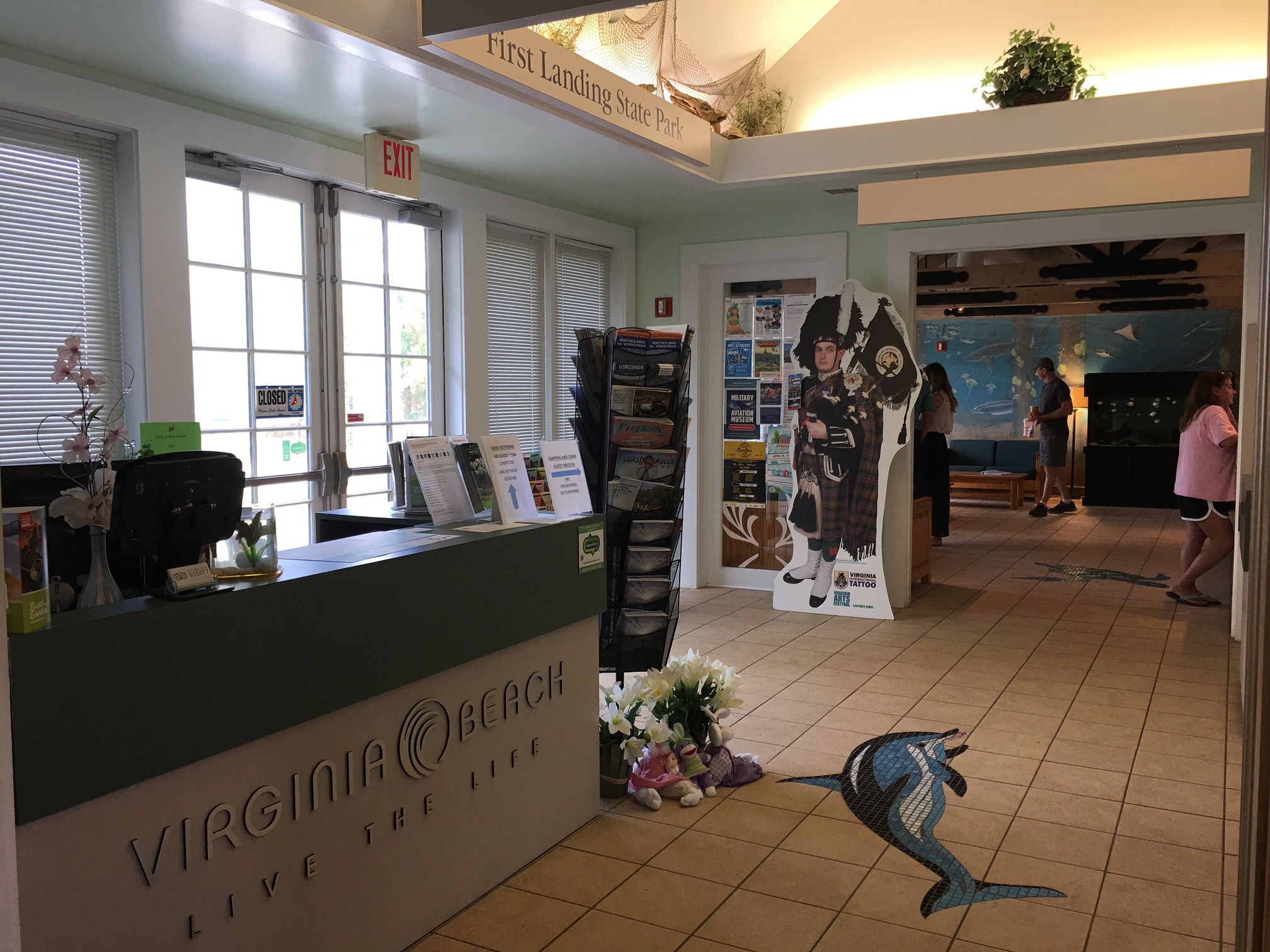
The three ships—Susan Constant, the Discovery, the Godspeed—stopped at
Puerto Rico on April 6th, 1607, to get more supplies. The 140 Englishmen and
the ships landed in Virginia twenty days later to create the first permanent
English settlement in the New World, Jamestown.
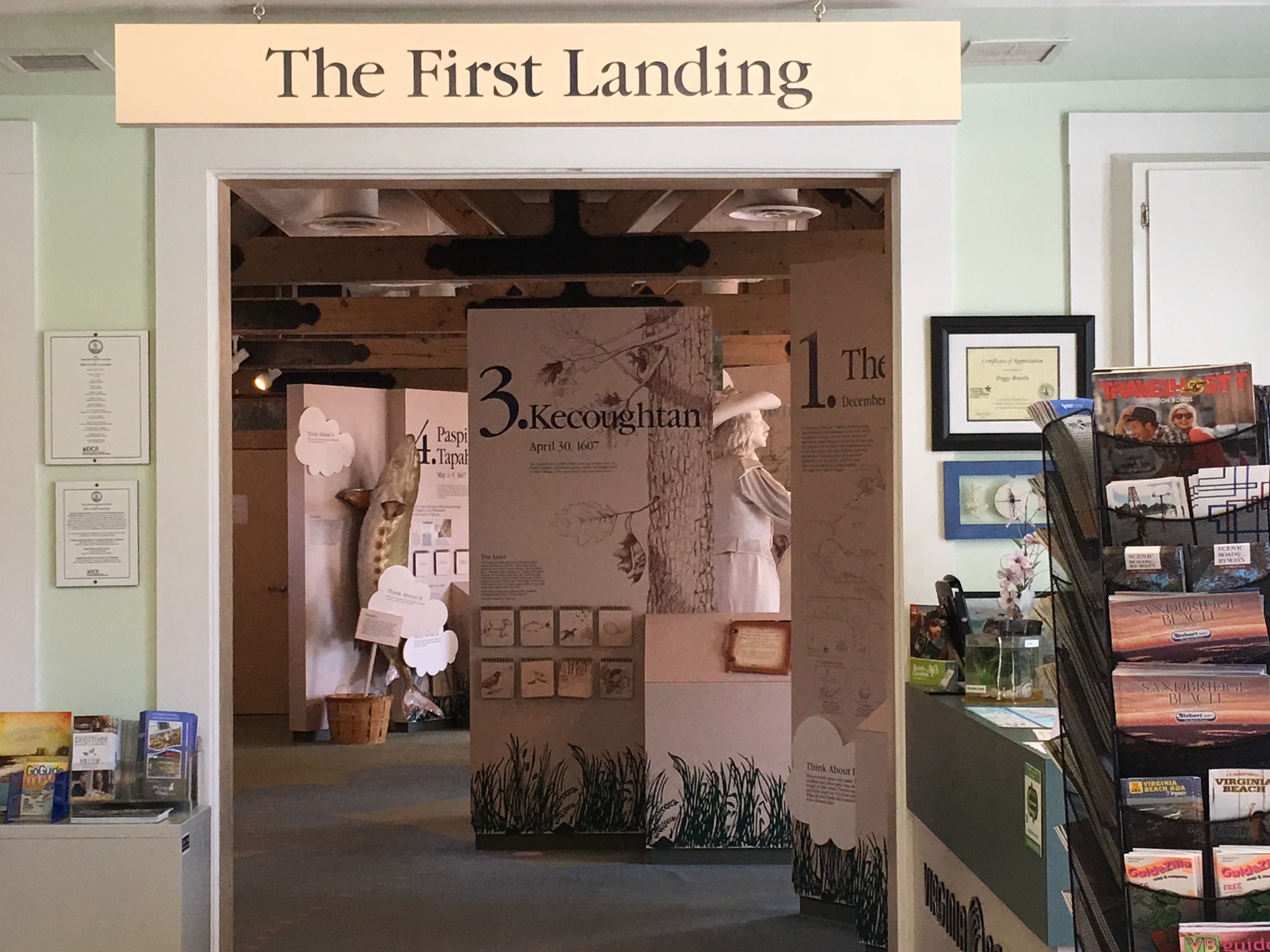
The First Landing story is told in great detail here, and is fun for all
ages; an hour is adequate time for this section of the Visitors Center.
Nearby Cape Henry is named for King James I’s elder son, Prince Henry
Frederick Stuart, the site of the first landfall. A cross erected in 1935 by
the Daughters of the American Colonists marks the site near the Cape Henry
Lighthouse.
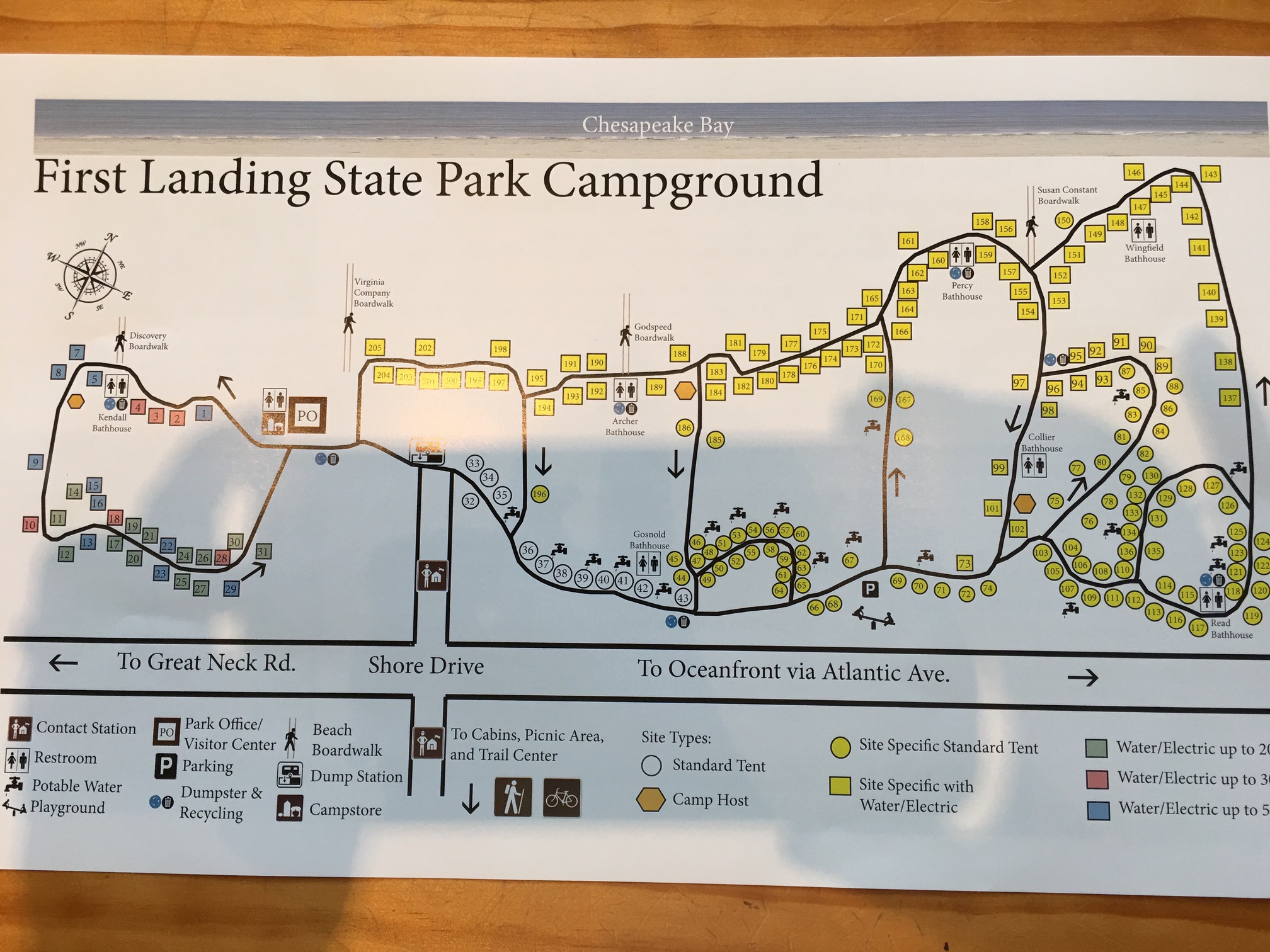
This campground map at First Landing State Park is the most up-to-date map
available and is in the visitors center. Also in the visitors center, in
addition to the walk-through timeline, are a wonderfully large fishtank and
a very comfortable couch, a camping coordinator, and helpful rangers. There
is lots of parking here, and at the far end of the lot are a water pumping
station for campers and a drinking water source.
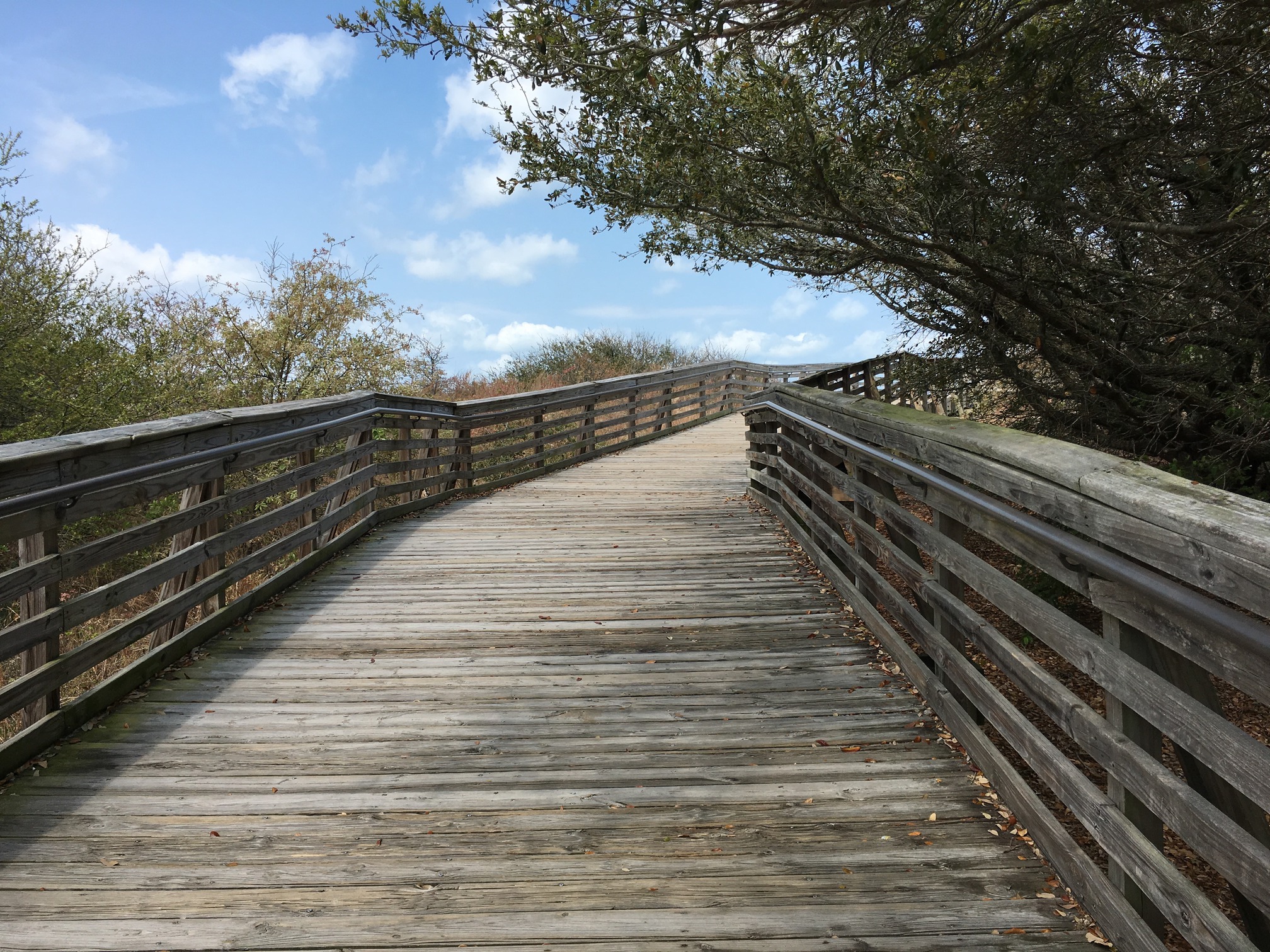
This beautiful boardwalk leads straight to the Chesapeake Bay Beach. It is called
the Virginia Company Boardwalk in honor of the Virginia Company of London,
which in 1606, provided the funds that launched three English ships to the
New World to establish colonies in North America. Fun fact: the voyage was
also an effort to locate the lost colonists of Roanoke.
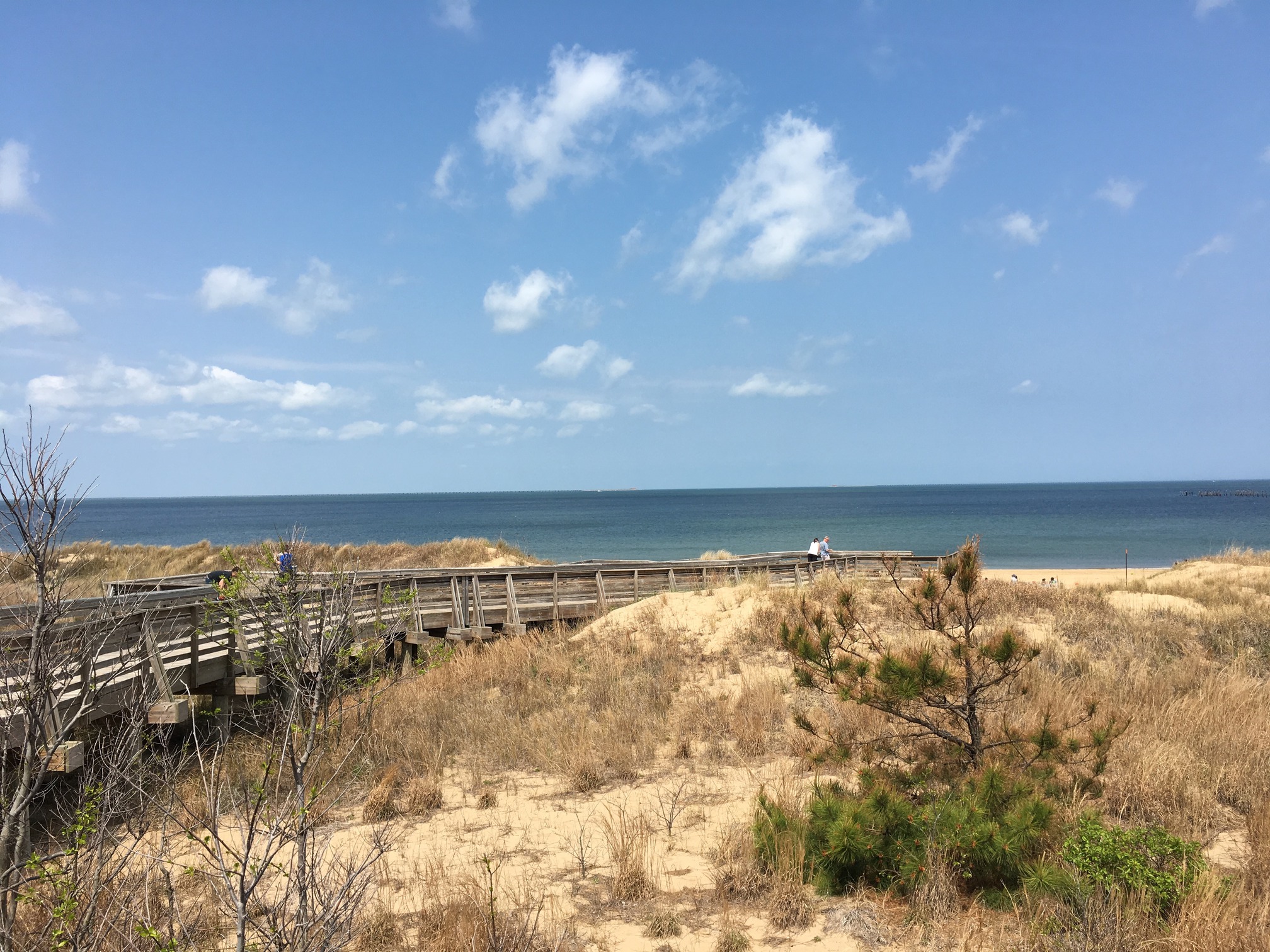
There are three other boardwalks at First Landing: the Susan Constant is the
easternmost, between the Wingfield and Percy bathhouses near camping units
150-157; the Godspeed, a few paces west of it, and the Discovery to the far
west. These are named after the ships that the Virginia Company set sail in
December 1606. Godspeed leads to restrooms at the Archer Bathhouse near
camping units 189-190, and the Discovery Boardwalk leads to restrooms at the
Kendall Bathhouse near units 4 and 5.
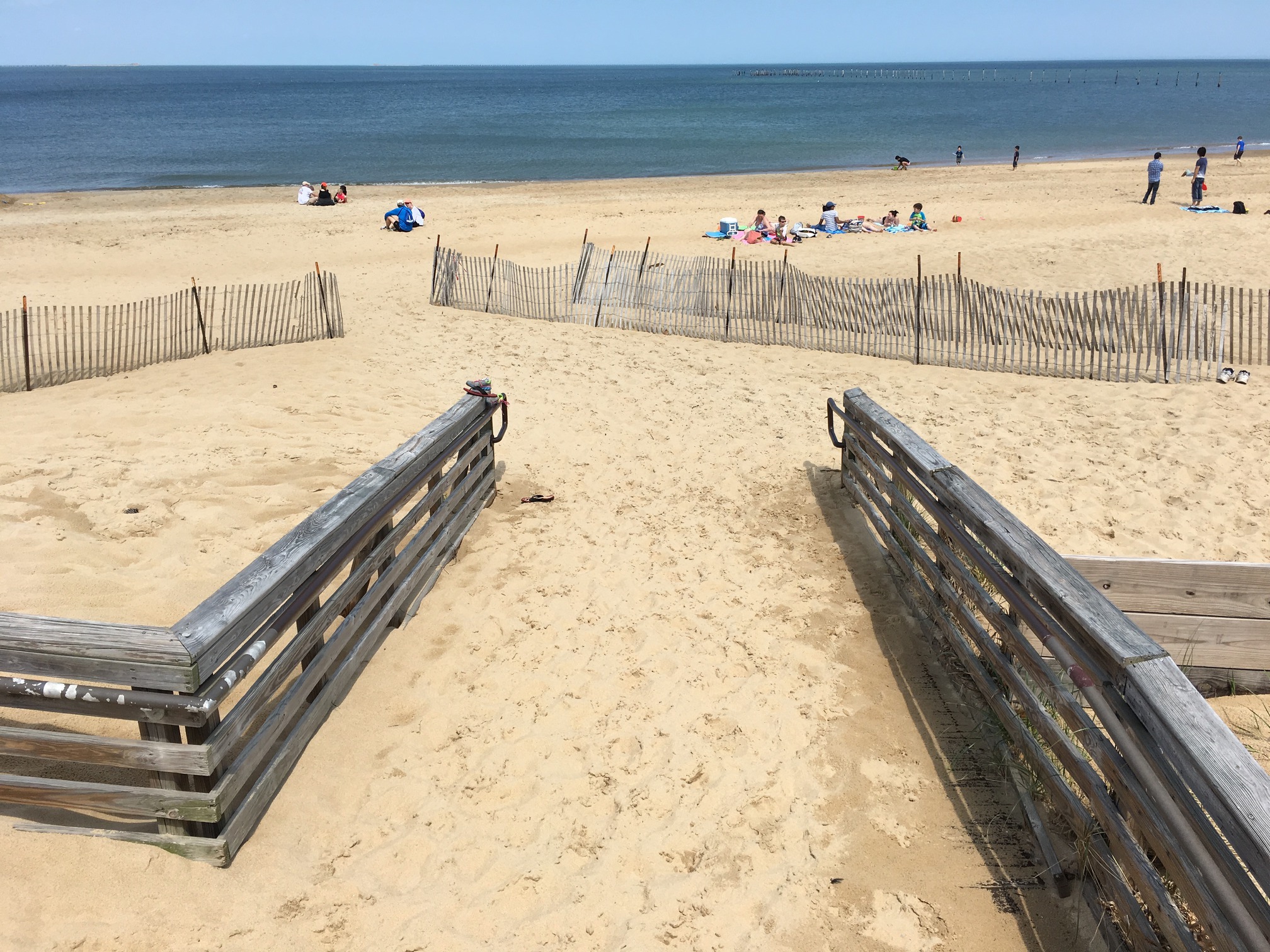
The far north end of the Virginia Company Boardwalk provides a spectacular
view of the Chesapeake Bay. According to the Virginia Institute of Marine
Science, the Chesapeake covers 4,480 square miles, has a shoreline of 11,684
miles, and holds 15 trillion gallons of brackish water.
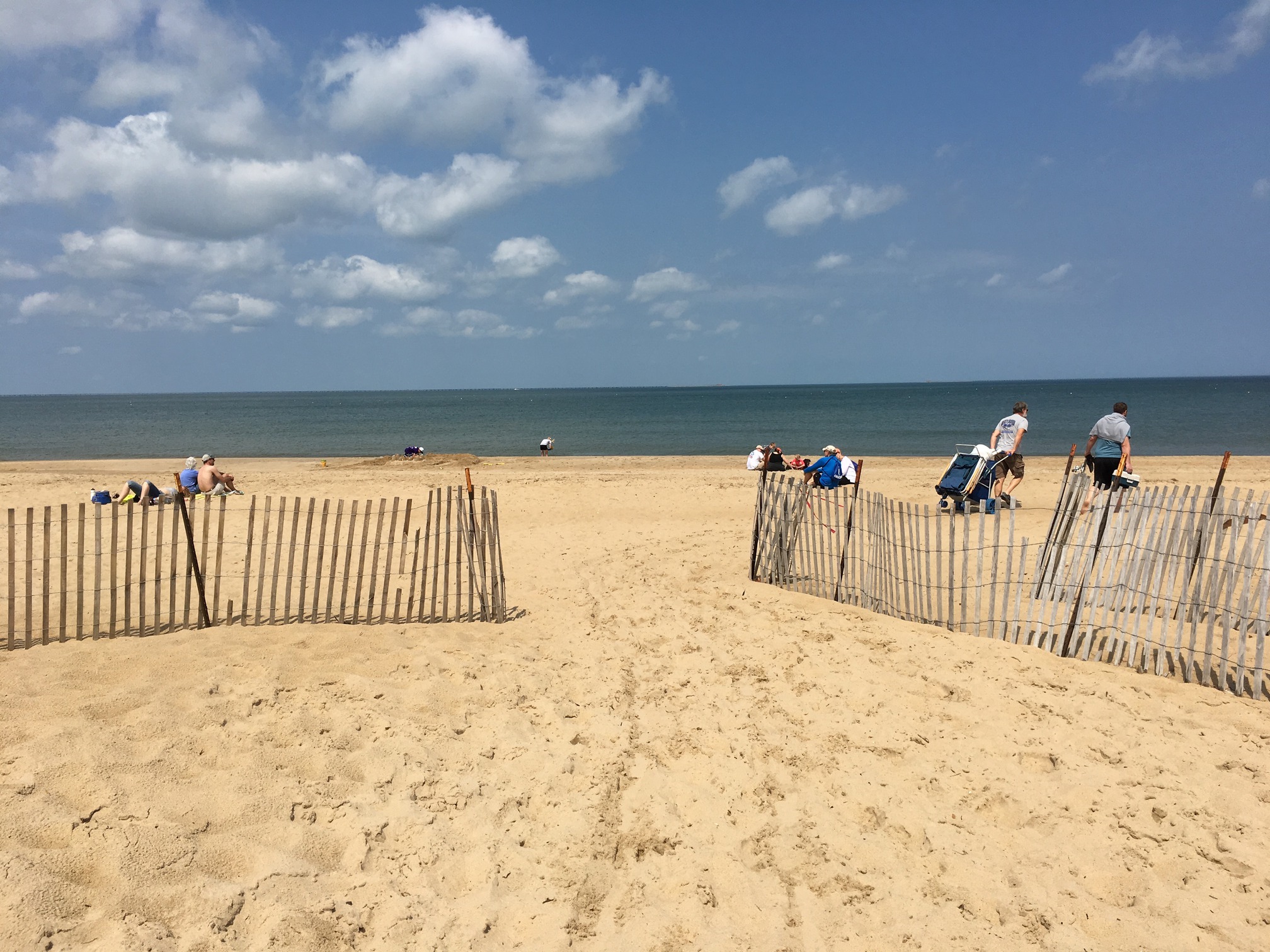
The “Chesapeake” in Chesapeake Bay comes from a 16th century Algonquian word
of similar spelling; many Native American tribes spoke Algonquian. While
many Old World explorers used Native place names on their maps and the like,
they did not write down what the words actually meant. The actual meanings
have been lost to history.
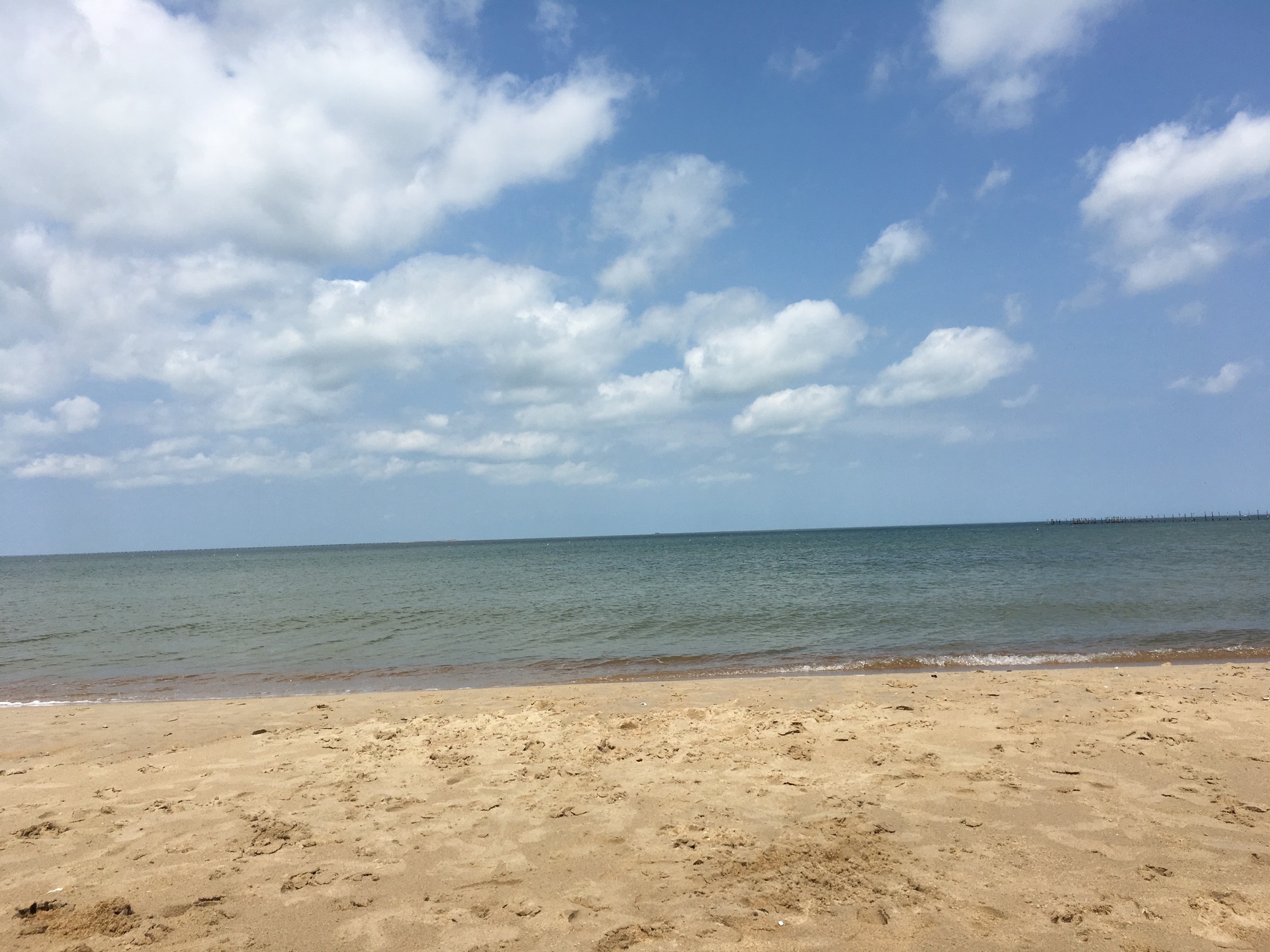
This image looks straight out into the bay from the Virginia Company
Boardwalk, north by northwest, on Saturday, April 15th, 2017, at 12:02 pm.
The high today will reach 64 degrees F, at 3:15 pm.
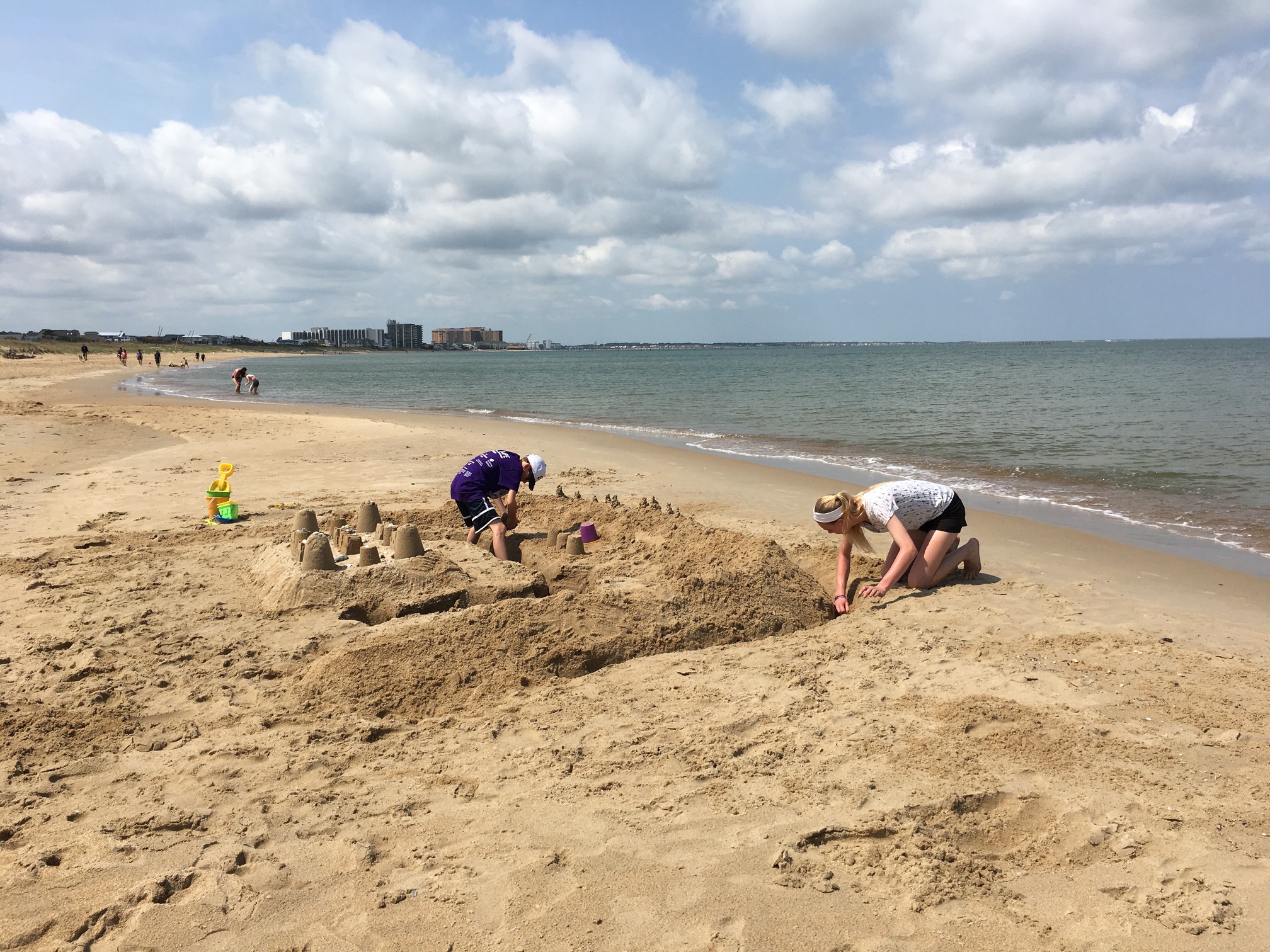
These ambitious castlebuilders took advantage of the low tide to create
their masterpiece; their work was the envy of many passersby. This pair of
beachgoers incorporated many types of shells into the towers of their
sculpture.
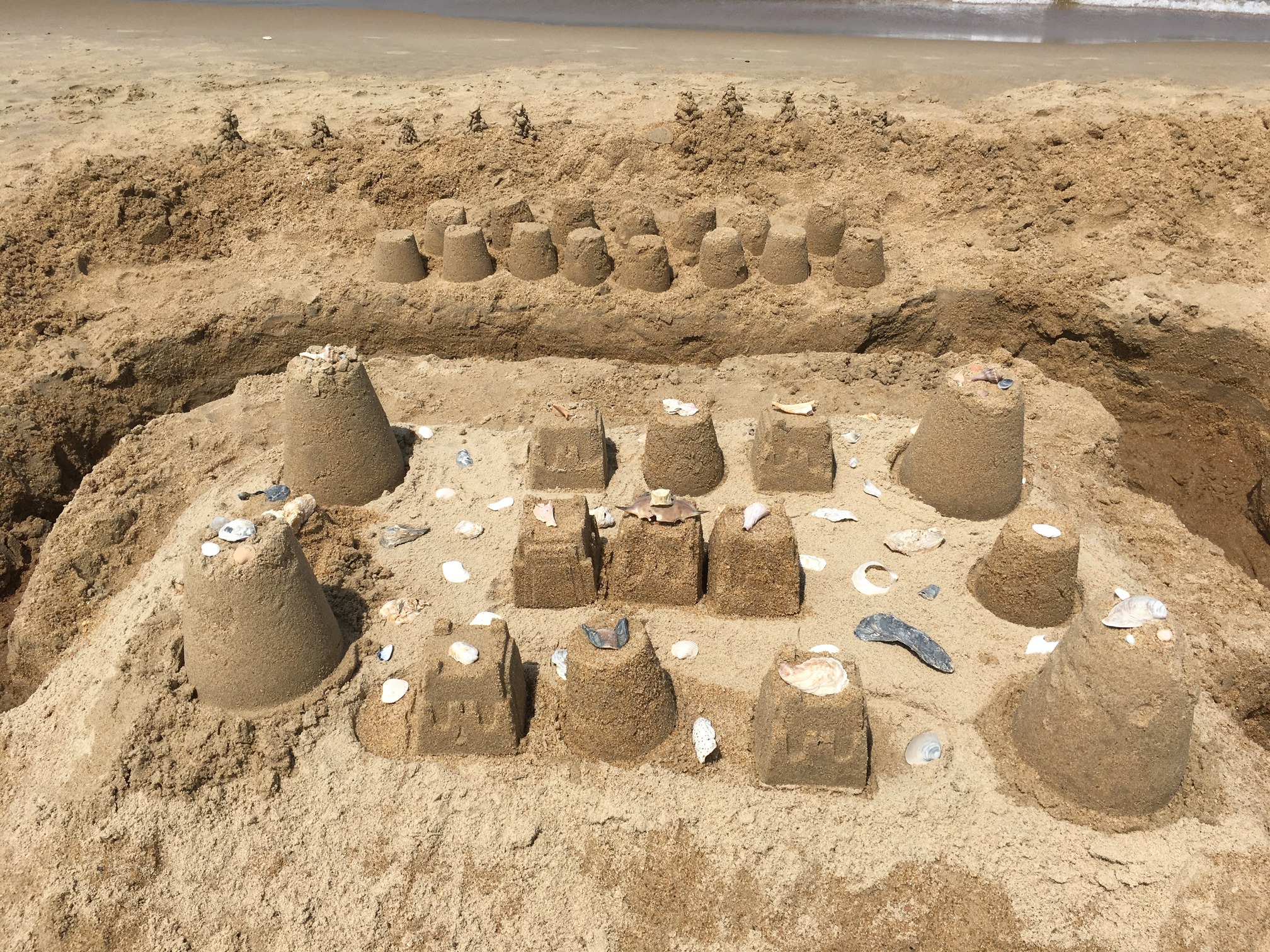
This castle contains the three most common types of shells found
in the Chesapeake Bay: bivalve shells and the spirally univalve shells, plus
oyster shells. They also used a bluecrab, which is set right in the middle
of this image. According to the website for the Chesapeake Bay Program, the
Bay is considered healthy at this time due to the increased numbers of adult
female bluecrabs and underwater grasses.
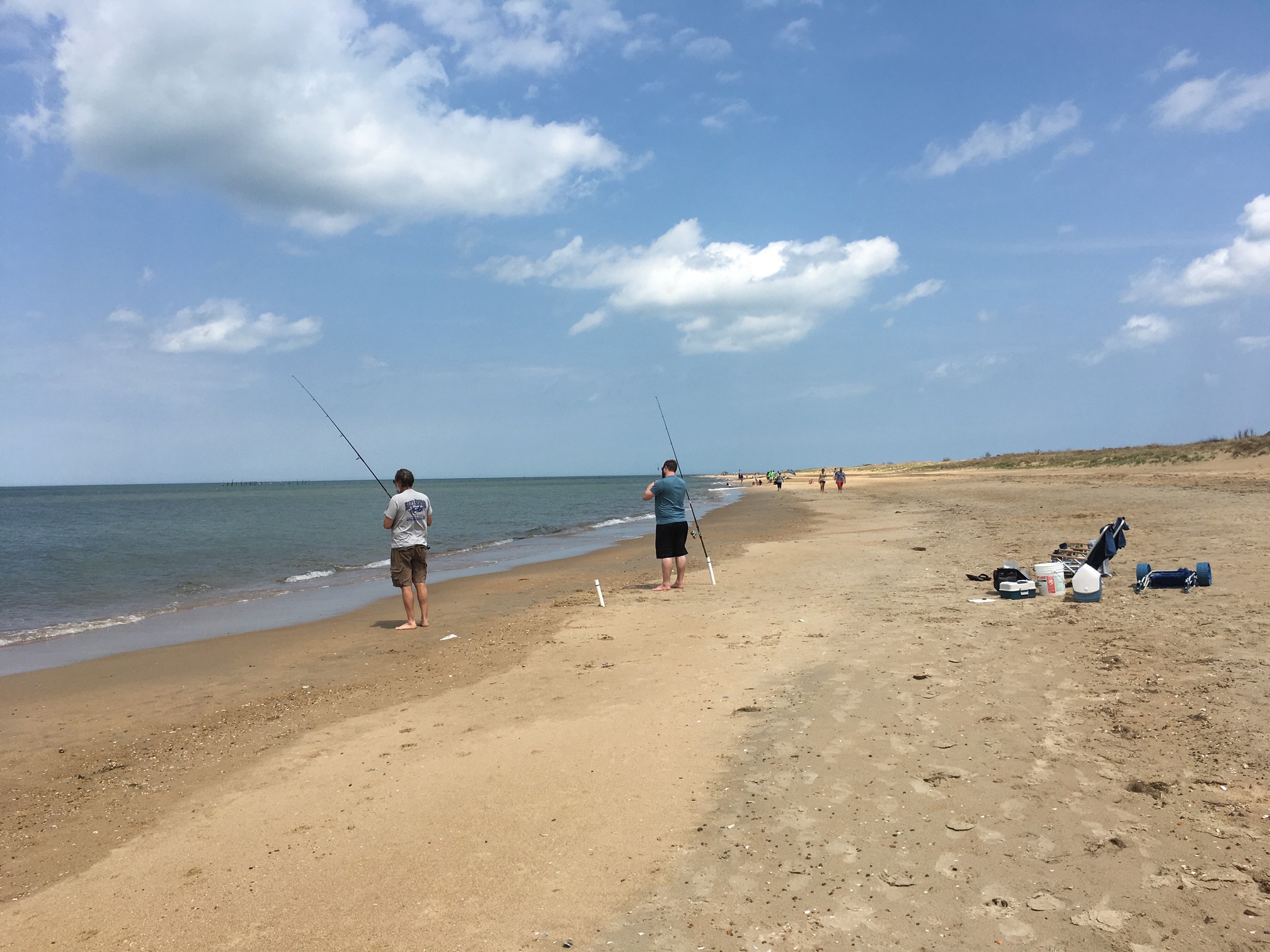
So what’s in the water today? According to chesapeakebay.net, there are more
than 350 species of fish in the Bay. These include the alewife, the Atlantic
sturgeon, the tiny Bay anchovy, the hogchoker, the lined seahorse, the
mummichog, striped bass, tautog, winter flounder, and yellow perch.
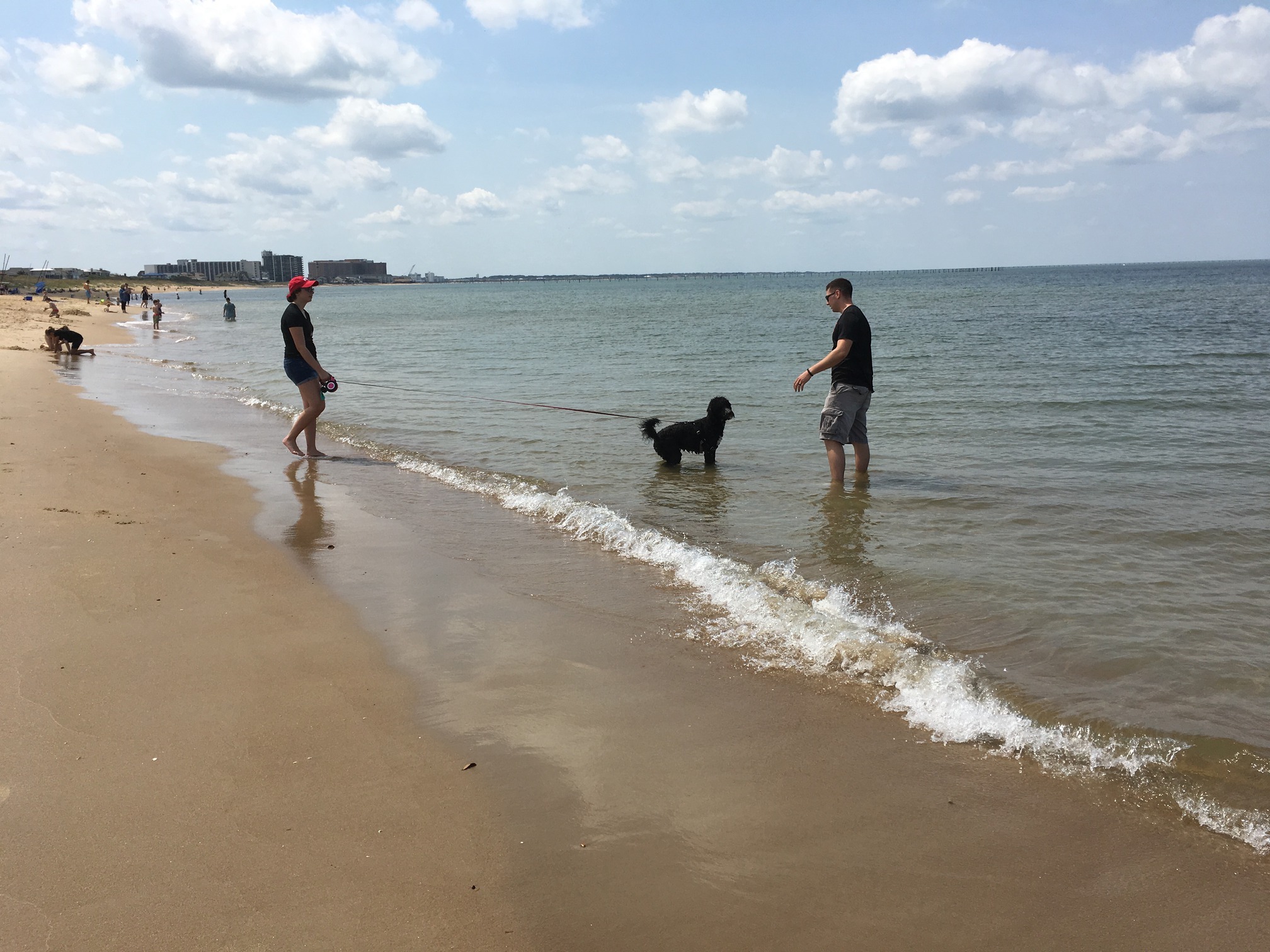
Dogs love this beach as much as people do. The water here in the Chesapeake
Bay is noticeably warmer than along the Virginia Beach Boardwalk; the waves
are also gentler. The shelling here is very good, as is the likelihood of a
chance encounter with a bluecrab or a starfish.
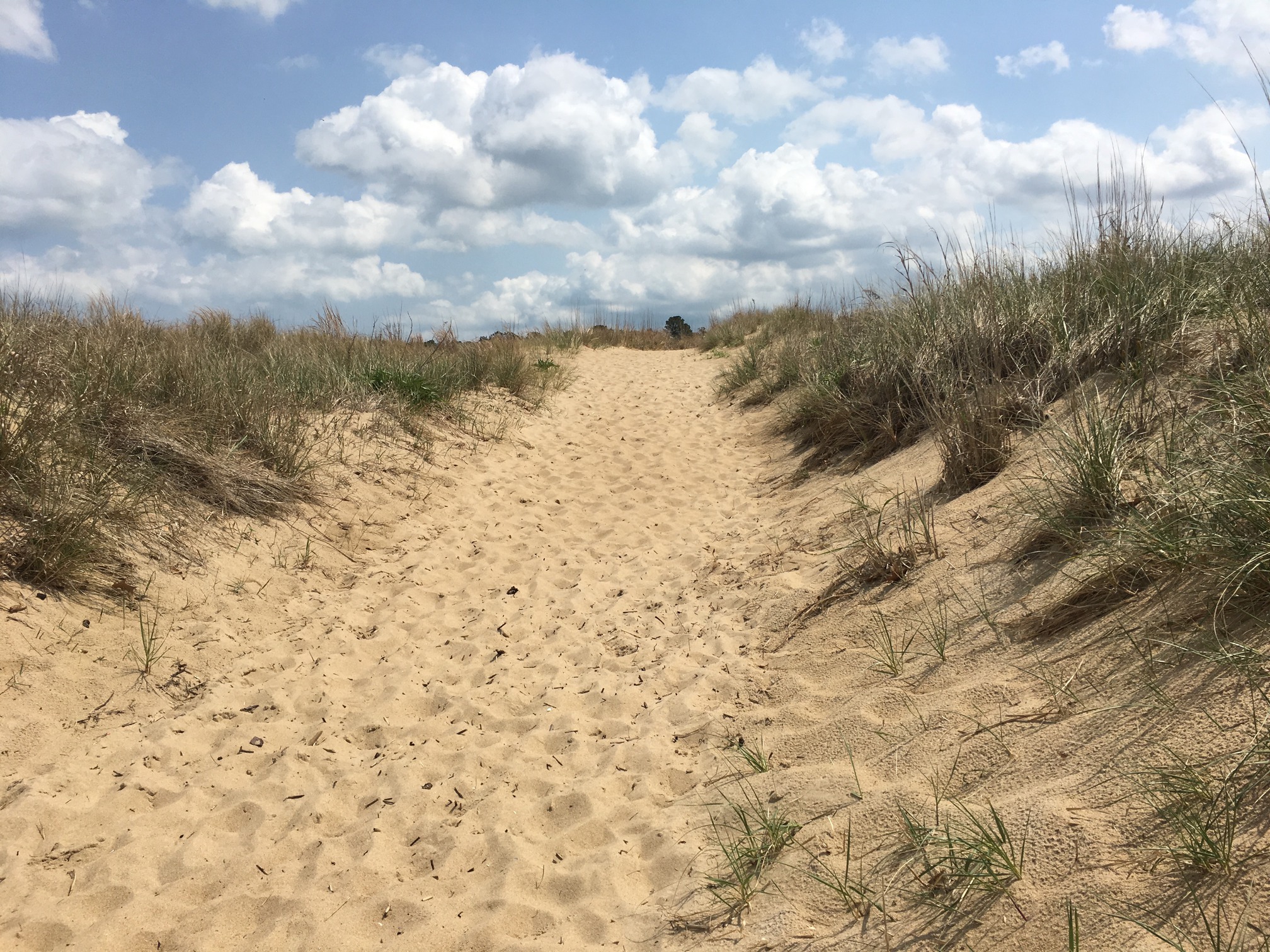
This dune is a fun diversion from the beach, and there is a lot of wildlife
here to observe in the grasses, the shrubs, the pine trees and the sky. It’s
best not to wander off the trail, as foot traffic can cause erosion of the
grasses that hold the sand in place. This path leads straight back to a
paved road, which in turn leads to the visitors center.
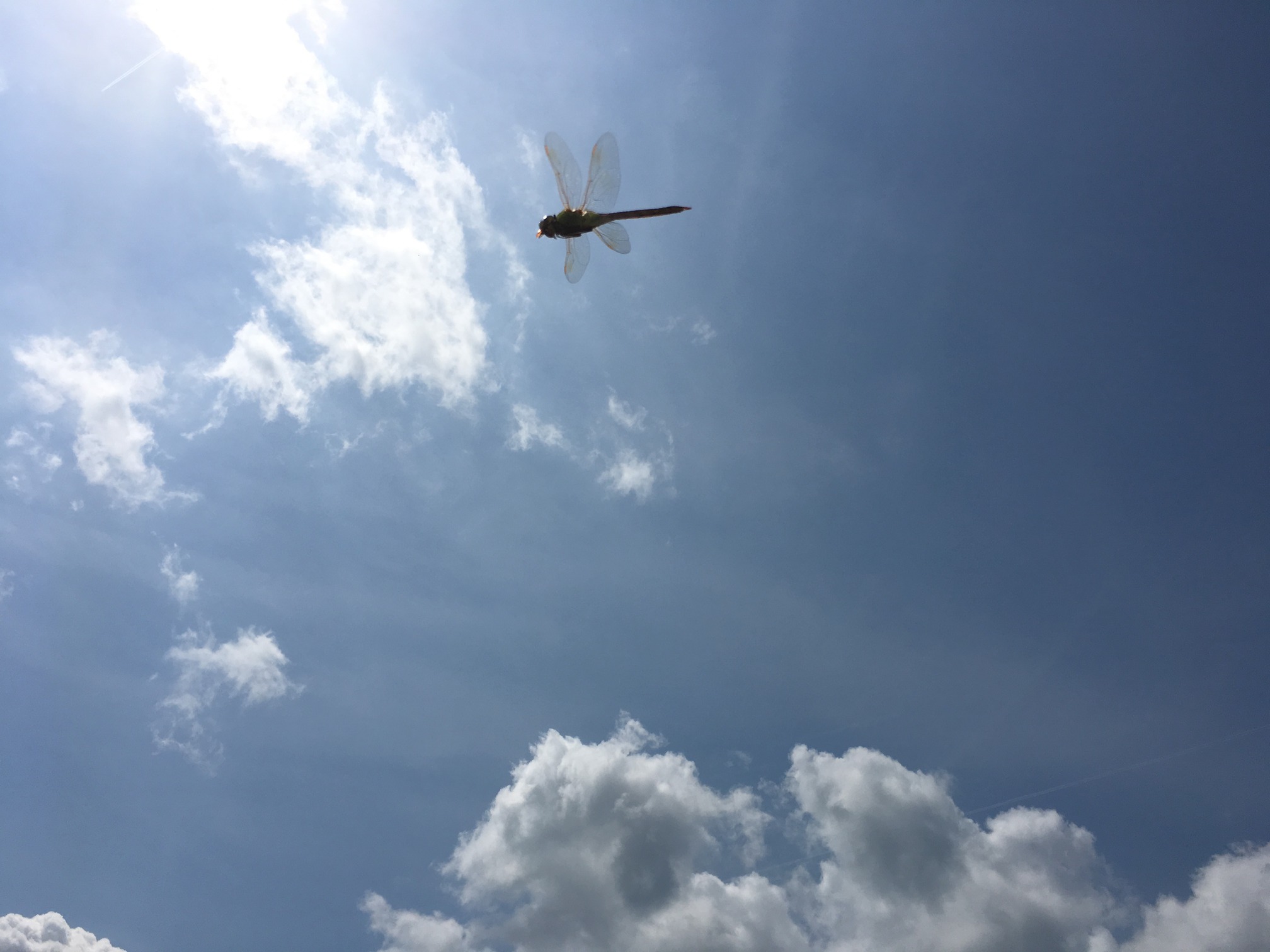
Didn't see any dragonflies at the Virginia Beach Boardwalk, but there were
plenty of them, including some enormous ones, buzzing around here at First
Landing. They were flying in the water, along the shoreline, above the
dunes, and zipping along the grasses and shrubs. This arthropod is harmless
and beautiful, but may fly close. Dragonflies begin as nymphs in the water,
and live for seven months, feeding off mosquitoes among other insects.
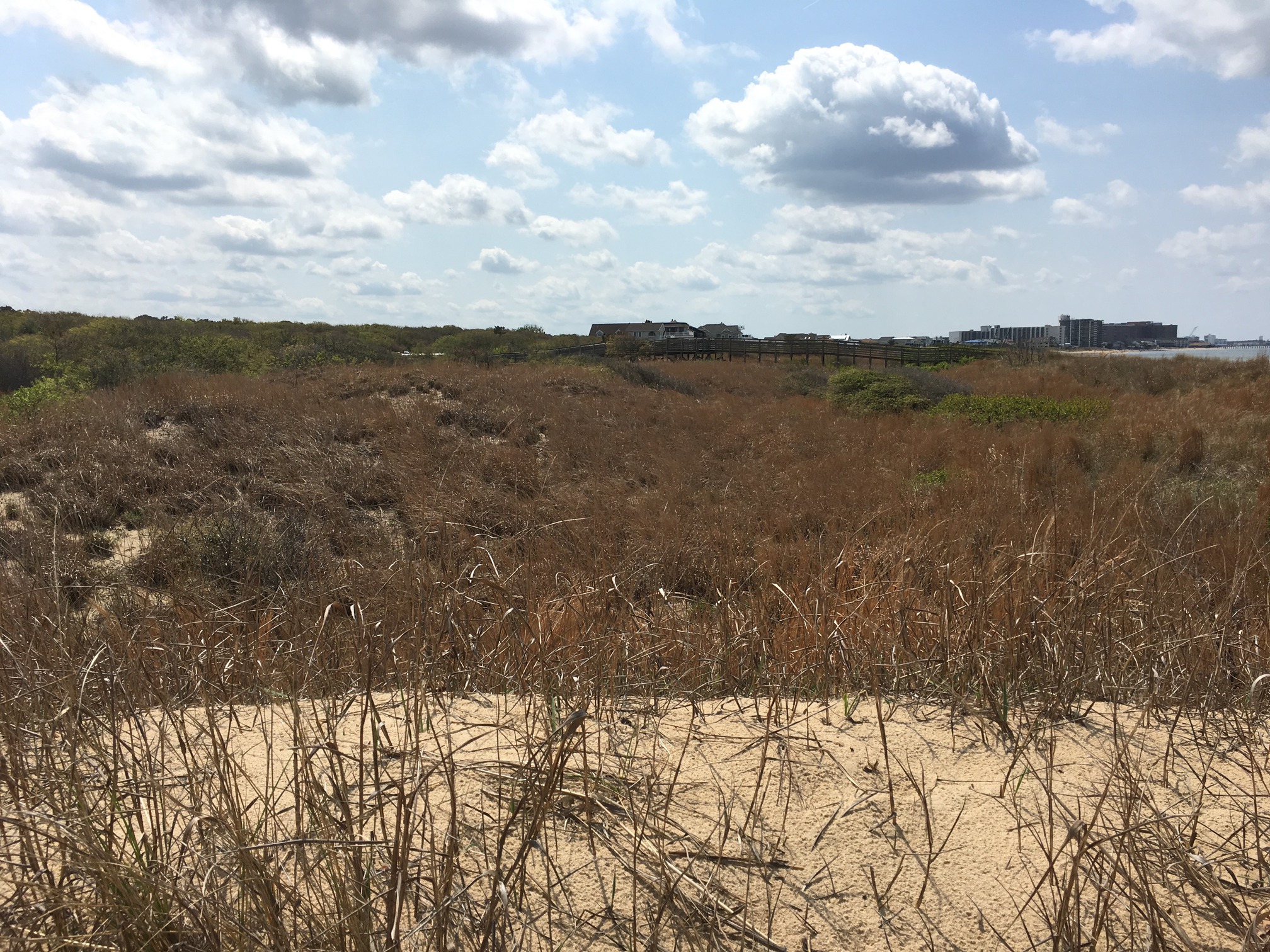
Beyond the dunes, shrubs and trees is the Discovery Boardwalk, and west of
that are the farthest camp loop and Kendall Street, which mark the
westernmost edge of First Landing State Park. Condos and other beachfront
properties stand shoulder to shoulder here, with dozens of shops and
eateries. There are a lot of ships, including some ginormous naval vessels,
that are easily viewable in the distance.
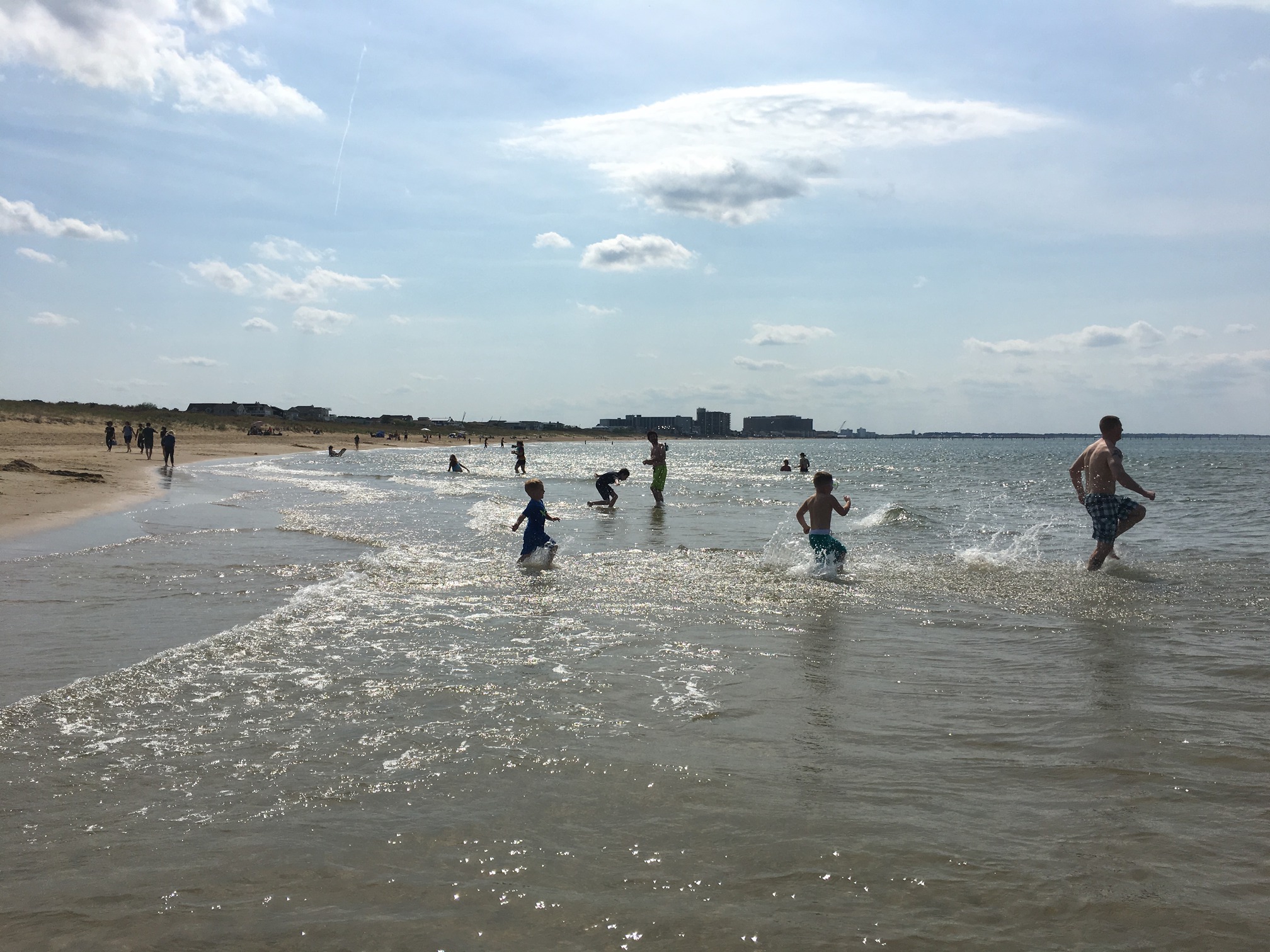
This daddy is leading his two ducklings into the Bay. Alas, there are no
lifeguards here, and the beach is not groomed as is the sand at the Virginia
Beach Boardwalk. There is a lot of seaweed that washes up, but this beach is
closer to nature than the hotel beach. It’s also a lot quieter, and even the
fighter jets are fewer and further between. There is very little litter, and
the remnants of old docks are fun to look at.
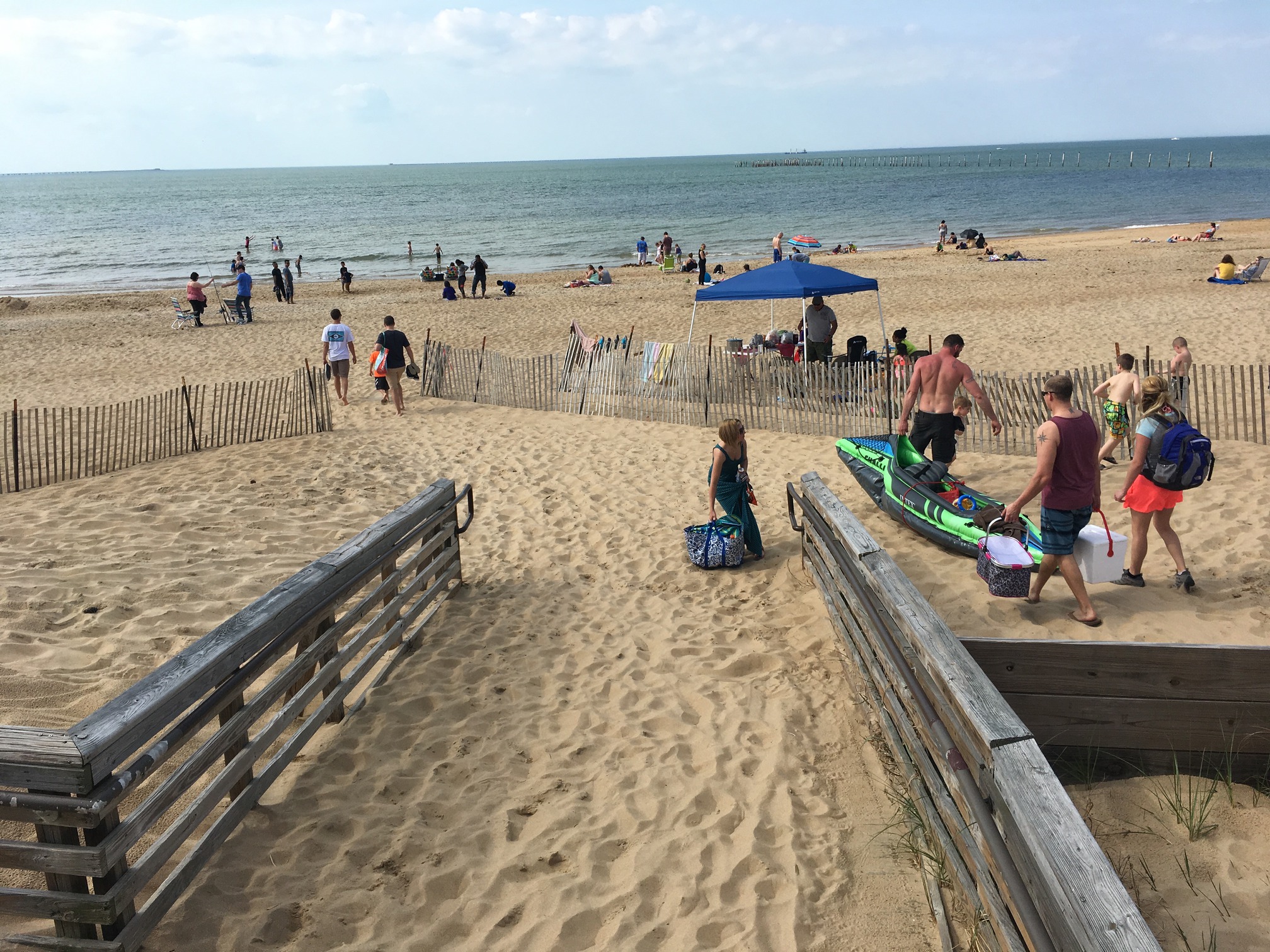
Old remnant pilings are visible at the top right of this photo, taken later
in the day as people are both leaving the beach and just coming in. The sun
is starting to go down and the air is getting a little cooler, now that it’s
after 4 pm. Sunset would come at 7:40 pm.
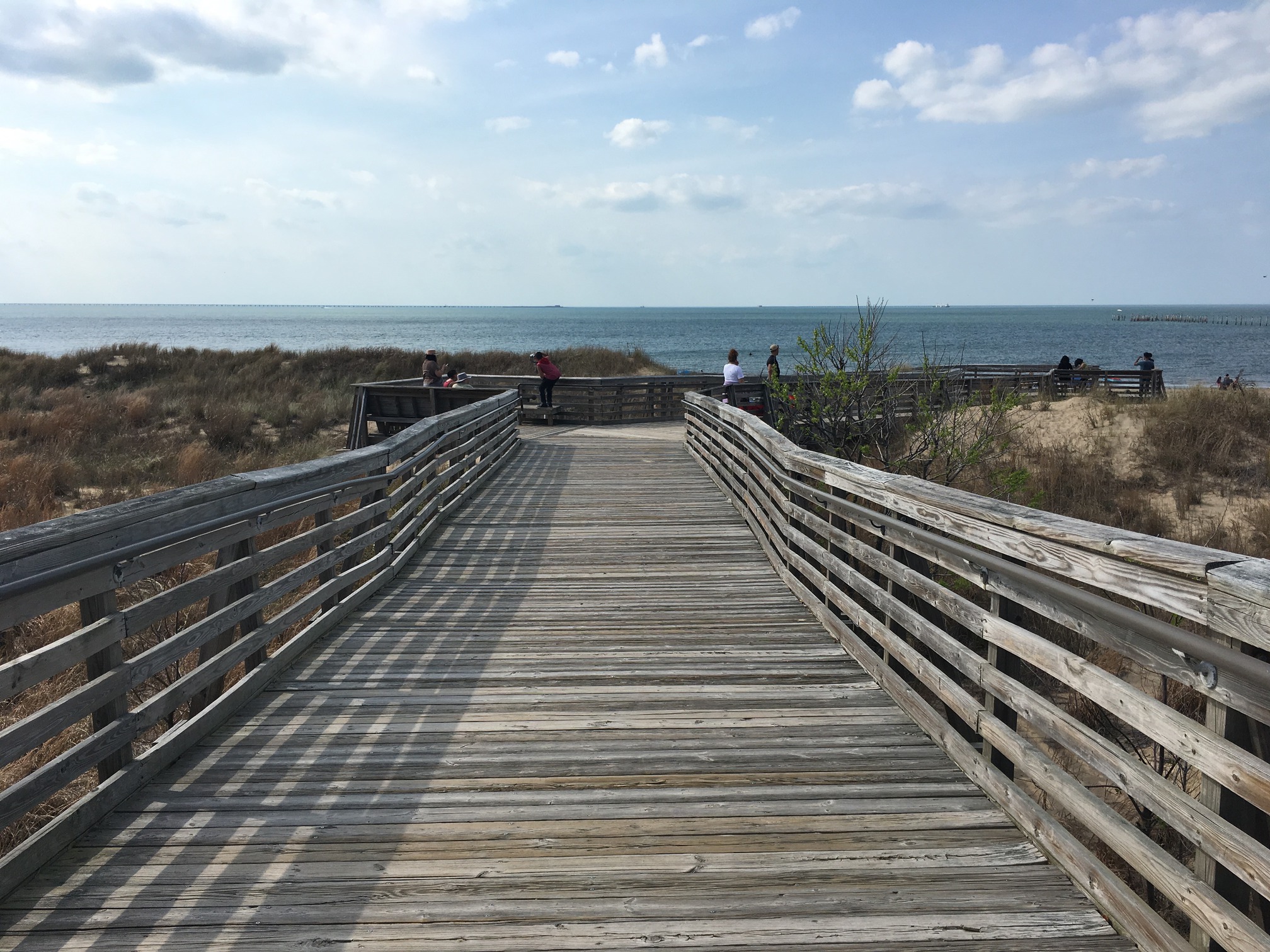
After one last look at the Virginia Company Boardwalk, it’s time to head
back toward the visitor center, which closes at 5 pm. Outside the visitor
center are a drinking fountain and a footbath, trash receptacles, and to
either side are the bathhouses, which have amenities. This is a great place
to visit, whether for an afternoon, a day, a weekend, or even a week. The
Cape Henry Lighthouse is a short drive east, as are many tourist hotspots to
the west past Kendall Street along Shore Drive/Route 60.